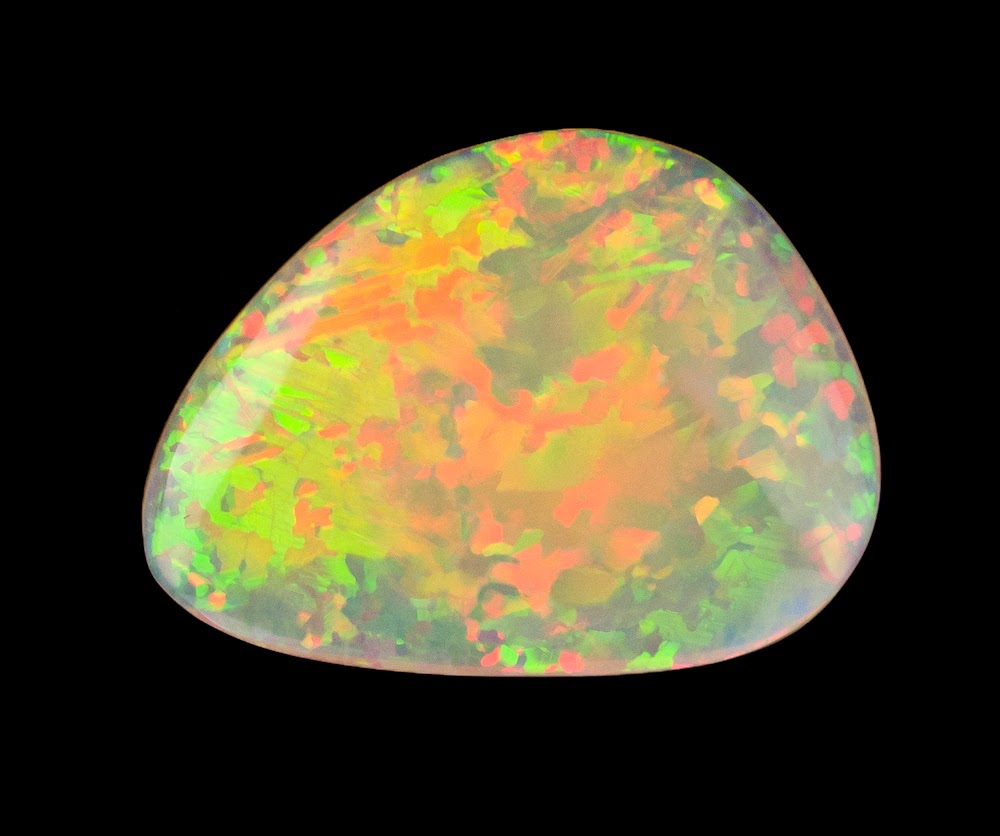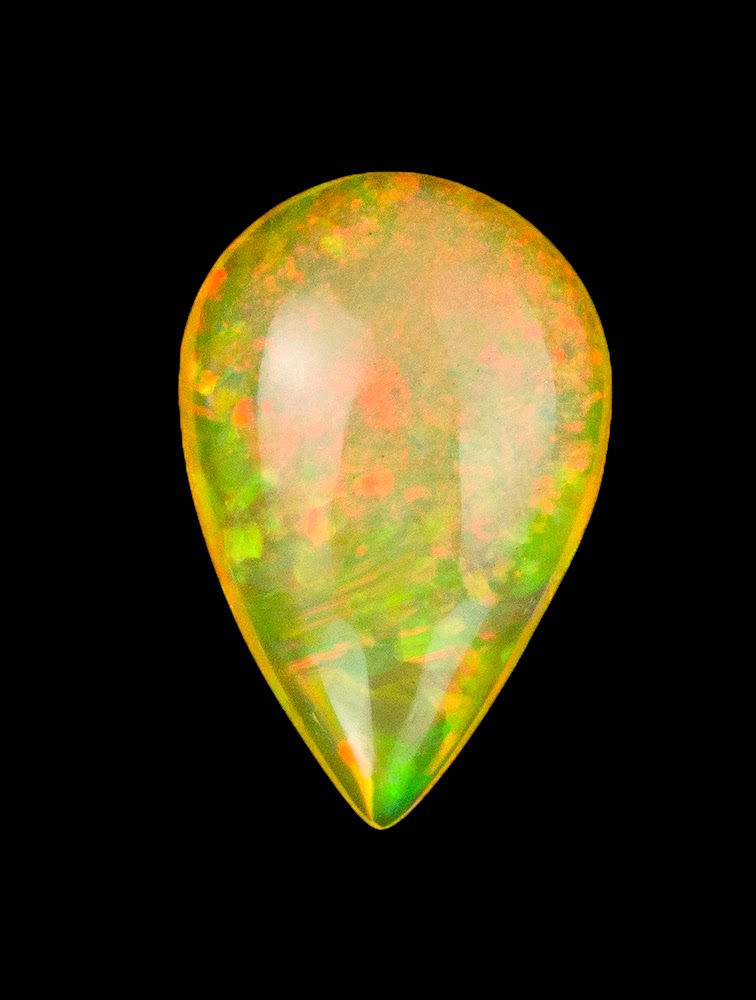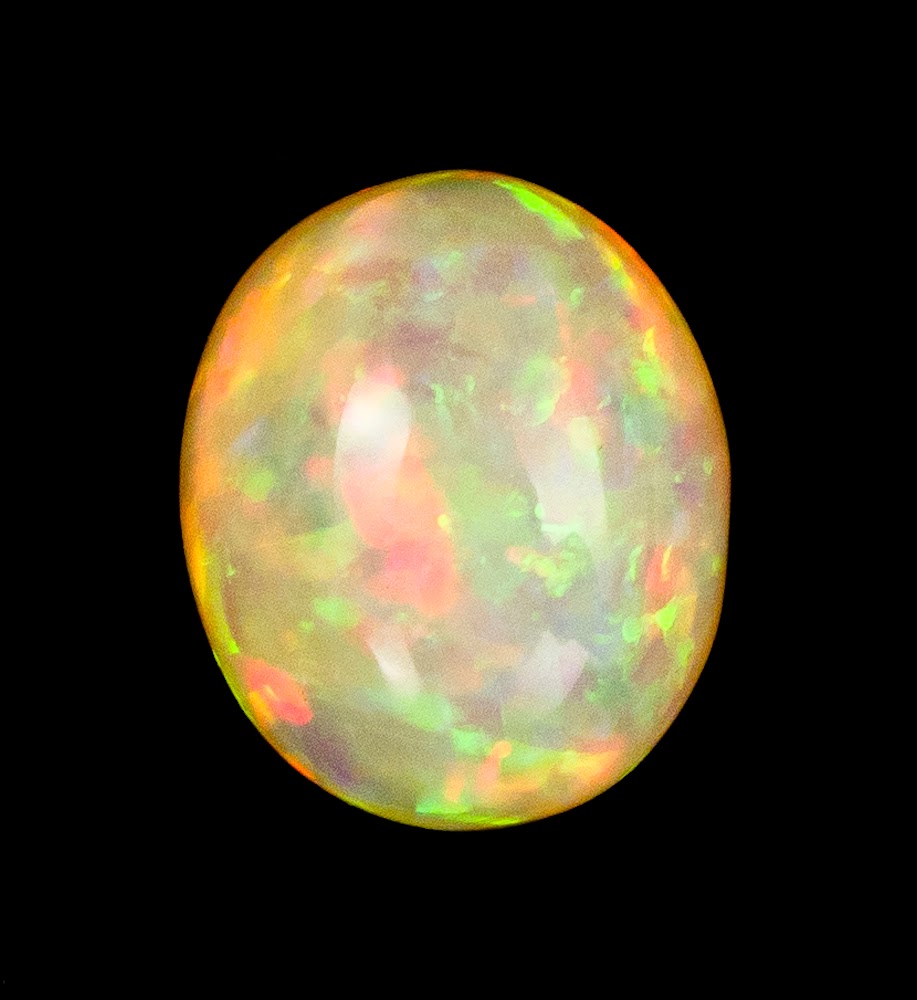
Chemical Formula: SiO2·nH2O
Locality: World wide occurrences.
Name Origin: From the Old Indian upala – “precious stone.”
What is Opal?
“What is Opal?” Opal is a hydrated amorphous form of silica; its water content may range from 3% to 21% by weight, but is usually between 6% and 10%. Because of its amorphous character it is classed as a mineraloid, unlike the other crystalline forms of silica which are classed as minerals. It is deposited at a relatively low temperature and may occur in the fissures of almost any kind of rock, being most commonly found with limonite, sandstone, rhyolite, marl and basalt. Opal is the national gemstone of Australia, which produces 97% of the world’s supply. This includes the production of the state of South Australia, which accounts for approximately 80% of the world’s supply.
The internal structure of precious opal makes it diffract light; depending on the conditions in which it formed, it can take on many colors. Precious opal ranges from clear through white, gray, red, orange, yellow, green, blue, magenta, rose, pink, slate, olive, brown, and black. Of these hues, the reds against black are the most rare, whereas white and greens are the most common. It varies in optical density from opaque to semi-transparent.
Common opal, called “potch” by miners, does not show the display of color exhibited in precious opal.
Related:
Types of Opal
Why is Australian Opal Unique?
How Do Opalised Fossils Form?
Optical properties
Optical and misc. Properties: Transparent – Opaque – Translucide
Refractive Index: from 1,43 to 1,45
Physical Properties
Cleavage: None
Color: White, Yellow, Red, Brown, Blue.
Density: 1.9 – 2.3, Average = 2.09
Diaphaneity: Transparent to translucent to opaque
Fracture: Conchoidal – Fractures developed in brittle materials characterized by smoothly curving surfaces, (e.g. quartz).
Luminescence: Fluorescent, Short UV=greenish yellow, Long UV=white.
Luster: Vitreous – Dull
Streak: white
Photos :














